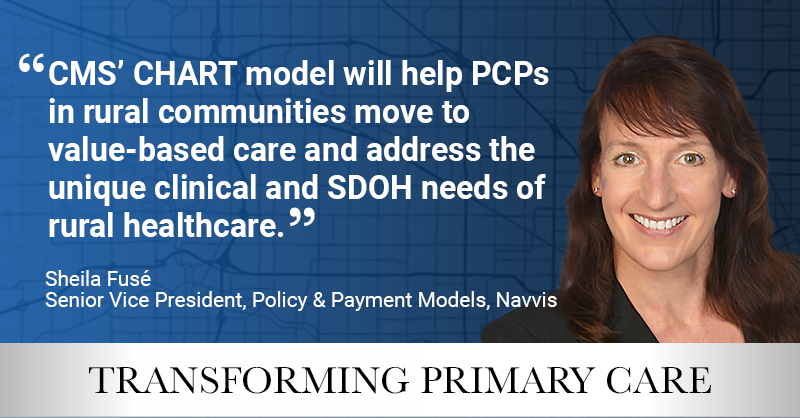
Sheila Fusé, Navvis’ SVP of Policy & Payment Models, Discusses the Impact of the CMS CHART Model on Rural Primary Care
One of the many cracks in the healthcare system that COVID-19 has unveiled is how primary care doctors are paid. In 2018, 70% of doctor’s office revenue came from fee-for-service (FFS), where doctors are paid for every service provided. As patient volumes plummeted, the FFS revenue stream dried up. As a result of the revenue loss, physicians and health policy experts say that there is a new push to change the way primary care physicians are paid. Through primary care demonstration programs, such as Comprehensive Primary Care Plus and Primary Care First, doctors receive a fixed per-member amount each month, patient visit fees, and quality bonuses. In the U.S., spending on primary care is 5.5-7.7% compared with other developed countries where spending is 12-14%. These primary care demonstration models are trying to increase primary care access and time with providers.
Expanding on these models, CMS recently announced the new Community Health Access and Rural Transformation (CHART) Model, with a Community Transformation Track and an ACO Transformation Track. Created in response to an executive order, this Model will provide upfront and monthly payments to health systems and other participants in rural areas. CMS recognizes that rural communities face unique challenges, resulting in rural Americans facing worse health outcomes than those living in urban areas. Through CHART, CMS provides new ways for rural communities to transform their healthcare delivery systems by leveraging innovative financial arrangements and operational and regulatory flexibilities.
Shifting away from FFS payments will help providers ensure that they have a steady income, which is why some providers are attracted to primary care capitated models or concierge medicine. According to Modern Healthcare, rural providers have had difficulties making this change due to more limited options and resources. While prospective payments are for the providers, the upfront payment is for infrastructure to address the clinical or social determinants of health that meet the unique needs of rural communities. Beyond the CHART Model, programs like Primary Care First and even offerings by private insurance companies help primary care providers move towards value-based care.


